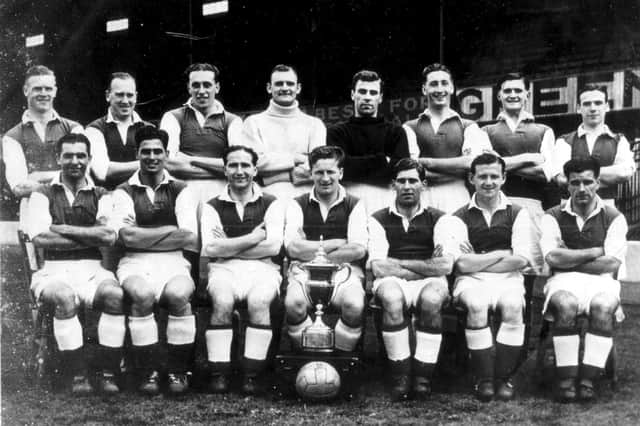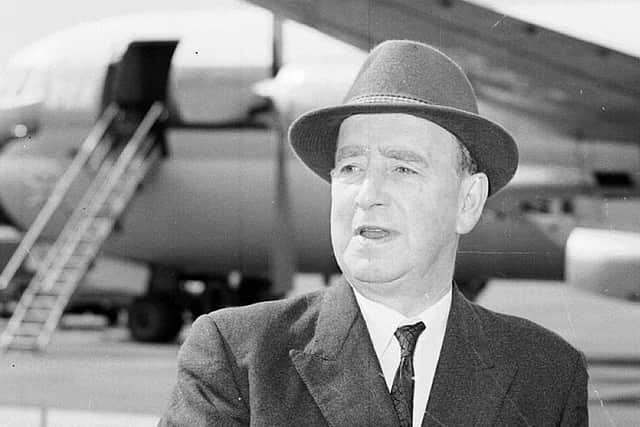When Hibs scored 29 goals in five games during a tour of Norway and Sweden


Between the late 1940s and early 1960s, Hibs went on end-of-season excursions, mostly in Europe, playing a handful of games against local opposition.
While there had been earlier trips – including the three-match series in Denmark in 1921 – 1947 marked the first time that the Easter Road side embarked on a lengthy tour of a foreign country when they organised a tour of Norway and Sweden in June.
Advertisement
Hide AdAdvertisement
Hide AdChairman Harry Swan had been in post since 1934 but his ideas only really began to take shape towards the end of the following decade. While other teams dismissed the idea of tours, minor competitions, and exhibition games, branding them a waste of time, Hibs embraced it.


The late forties and early fifties were undoubtedly Hibs’ golden years and on the back of their league success – three titles in five years – the team quickly developed a reputation for attacking football so there was demand for the team to showcase their talents on a wider scale.
Off to Norway
Hibs had had a broadly successful 1946/47 campaign, finishing in second – just two points behind Rangers – and reaching the semi-final of the League Cup and final of the Scottish Cup.
A couple of weeks before the trip to Scandinavia they defeated Hearts in the East of Scotland Shield.
Advertisement
Hide AdAdvertisement
Hide AdHibs departed Prestwick Airport on May 31 1947. Edinburgh Airport had only just launched commercial services following World War II in the same year, with British European operating flights between the Capital and London. A new passenger terminal to serve the growing number of travellers wouldn’t be built until nearly ten years later, in 1956.
Prestwick, on the other hand, had had passenger facilities added in 1938 and by 1945 planes were regularly flying between Prestwick and New York – via Goose Bay in Labrador, Canada and what is now Keflavik Airport in Iceland.
Shortly before the team left, Swan threw out a “substantial offer” for Gordon Smith from Newcastle United, just weeks after Smith had himself turned down the chance to join Manchester United.
‘Smith, Johnston, Reilly, Turnbull, Ormond…!’
In the summer of 1947 Lawrie Reilly, Eddie Turnbull, and Willie Ormond had all been part of the first team for just over a year while Smith had been there considerably longer, making his debut in April 1941.
Advertisement
Hide AdAdvertisement
Hide AdWhile it’s true Bobby Johnstone had joined Hibs from Selkirk in 1946, he wasn’t handed his senior debut until April 1949 and the friendly match promised to Selkirk by Hibs as the transfer fee for Johnstone and his team-mate Eck Piercy wasn’t played until four months after the Nordic trip.
Johnstone was regularly catching the eye for Hibs’ reserve team but even so, Bobby Combe was ahead of him in the pecking order.
So who was the Johnston who ended up scoring four goals during the tour?
Leslie Johnston was a prolific inside-forward for Clyde. Glasgow-born, he had impressed for Clydebank Juniors before making the move to Shawfield in 1941 and continuing his for in front of goal for another six years.
Advertisement
Hide AdAdvertisement
Hide AdIn February 1947, Johnston walked into the Clyde boardroom demanding a sit-down with the Board of Directors, primarily to remind them of a promise they had made to him – that he would be allowed to move on for the first reasonable offer the club received.
Johnston proceeded to stun the directors, revealing that he knew a number of offers from English clubs had been turned down, and threatened not to extend his stay at Shawfield for the 1947/48 campaign.
The board promised to open talks with any club interested in securing Johnston’s services and when the club went public with the player’s desire to move on, it was other Scottish teams that got the ball rolling.
Dundee were first to register an interest, with Hearts offering £6,000 (£240,820 in today’s money). Then Hibs boss Willie McCartney telephoned Clyde. He knew Hearts were interested, and he also claimed Arsenal, Charlton, and Newcastle were keen.
Advertisement
Hide AdAdvertisement
Hide AdHe was prepared to hand over the entire £10,500 the club had received from Blackburn Rovers for Jock Weir in a bid to recruit another forward. A deal was struck, and Johnston moved to Easter Road for the equivalent of £421,435 in current money and what was then a record transaction between Scottish clubs.
Johnston scored on his debut against Celtic and finished the 1946/47 season with three goals in five games for Hibs – enough to earn him a place on the tour.
He scored four goals in five games during the tour including two in one match.
Surpringly, Johnston was sold back to Clyde for the same price in August 1947 after scoring 16 goals in 19 games for Hibs, including four on the Nordic tour.
Advertisement
Hide AdAdvertisement
Hide AdHe continued to hit the back of the net for the Bully Wee, winning two caps for Scotland, and eventually earned a move to Celtic before finishing his career in England with Stoke and Shrewsbury.
How Hibs fared on the tour
Hibs had scored 69 goals in 30 games during the previous season and with four of the Famous Five already regular first-teamers it was little surprise that they hit the goal trail in Scandinavia.
The opening game againt Stavanger ended in a 5-0 victory with Smith netting a hat-trick and Eddie Turnbull a brace.
The next game against SK Djerv, Bergen’s second team after Brann at the time, resulted in an 11-0 win. Ormond and Smith scored four apiece, with Turnbull adding another double and Johnston completing the scoring.
Advertisement
Hide AdAdvertisement
Hide AdSK Gjøa of Oslo were up next, faring little better as they succumbed to a 7-0 defeat with Reilly scoring four, Smith two, and Ormond the seventh.
Over in Sweden, Sarpsborg were beaten 5-2 with Johnston scored twice, Ormond and Turnbull one each, and Jock Buchanan getting on the scoresheet but Norrkoping proved the toughest opposition of the tour and triumphed 3-1, with Johnston netting for Hibs.
A message from the Editor:
Thank you for reading this article. We're more reliant on your support than ever as the shift in consumer habits brought about by Coronavirus impacts our advertisers.
If you haven't already, please consider supporting our sports coverage with a digital sports subscription.
Comment Guidelines
National World encourages reader discussion on our stories. User feedback, insights and back-and-forth exchanges add a rich layer of context to reporting. Please review our Community Guidelines before commenting.